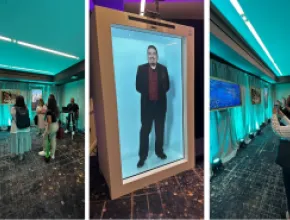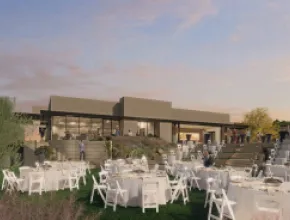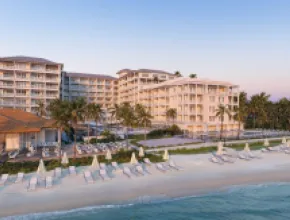As summer temperatures continue to rise, and as the earth becomes hotter and hotter, many people are wondering how to beat the heat and stay cool during these sweltering months. And no one is wondering about this more than meeting and event planners.
[Reated: Are Net-Zero Carbon Events the Future?]
With many events taking place outdoors, especially in the summertime, it is more important than ever for meeting and event planners to consider the health and safety of their attendees during extreme heat. Here are five tips for how to prevent heat-related illnesses at outdoor events and how to keep your attendees from overheating.
1. Provide Plenty of Water
While it might seem obvious that you should try to drink more water as the temperature rises, many people still underestimate how much water they should be consuming per day. According to the Mayo Clinic, women should drink on average 11.5 cups of water per day while men should drink around 15.5 cups per day. And you should be drinking even more during warmer weather or while doing physical activity.
Having your attendees stay hydrated during your outdoor event is one of the best ways to avoid heat-related illnesses since water helps you regulate your internal body temperature and replenish fluids lost through sweating.
2. Limit Drinks Causing Dehydration
While water might seem like a boring beverage to offer to your meeting or event attendees, it is going to be the best bet overall when it comes to keeping your attendees hydrated in the heat. While drinks such as coffee, wine and spirits may make an event livelier and participants happy, these drinks have been shown to act as natural diuretics and increase urine production, leaving less water for your body to keep you cool.
So, while these drinks might be highly requested by your participants, it’s best to stick to water or beverages with added electrolytes to limit the risk of people becoming dehydrated.
3. Provide Shade and Sun Protection
Prolonged sun exposure is one of the main causes of heat stroke, so providing a place where attendees can get some shade is going to be extremely helpful in limiting sun or heat stroke. When planning an outdoor event, make sure to set up a few tents or awnings to provide your participants with much-needed shade during the event.
You can also provide large hats or umbrellas to help participants shield their heads and necks from the sun. This will also help attendees avoid those dreaded sunburns that come from being outside for long periods of time. Skin damage from the sun can also cause long-term health problems such as skin cancer, so providing shade or other sun protection measures such as sunscreen goes a long way to keeping your attendees safe.
4. Encourage Participants to Wear Light Clothing
While many meetings and events take place in a professional setting typically calling for business or business-casual attire, these clothing options can often lead to rising internal body temperatures and can make participants more prone to heat-related illnesses. No one wants to be stuck outside on a hot day in a suit or other business wear, after all.
If you know in advance that your outdoor event is going to be met with sweltering temperatures, you might consider sending a note to your attendees encouraging them to dress in lighter clothing for the event. There are plenty of clothing options for both men and women that provide much-needed air circulation while still maintaining a professional look.
5. Avoid Metal Seating
While this might not be something many meeting or event planners consider, the choice of seating on a hot day can drastically affect your participants' comfort at your event. Chairs or stools made from a metallic material will tend to capture and retain heat while in direct sunlight much more than seating made from other materials like plastic or wood. If you cannot avoid metal seating, try to provide seat-covers to shield the chairs from the sun or provide enough space for participants to stand if they choose to.
It's important to keep your meeting or event attendees comfortable and safe while holding an outdoor event. And while summer might be the time most conducive for holding an outdoor event, rising temperatures present a clear danger to the health and safety of your participants. By taking these steps, you will ensure that your guests will remain healthy and comfortable while attending your event.
Read this next: Drone Light Shows Offer a Sustainable Alternative to Fireworks







